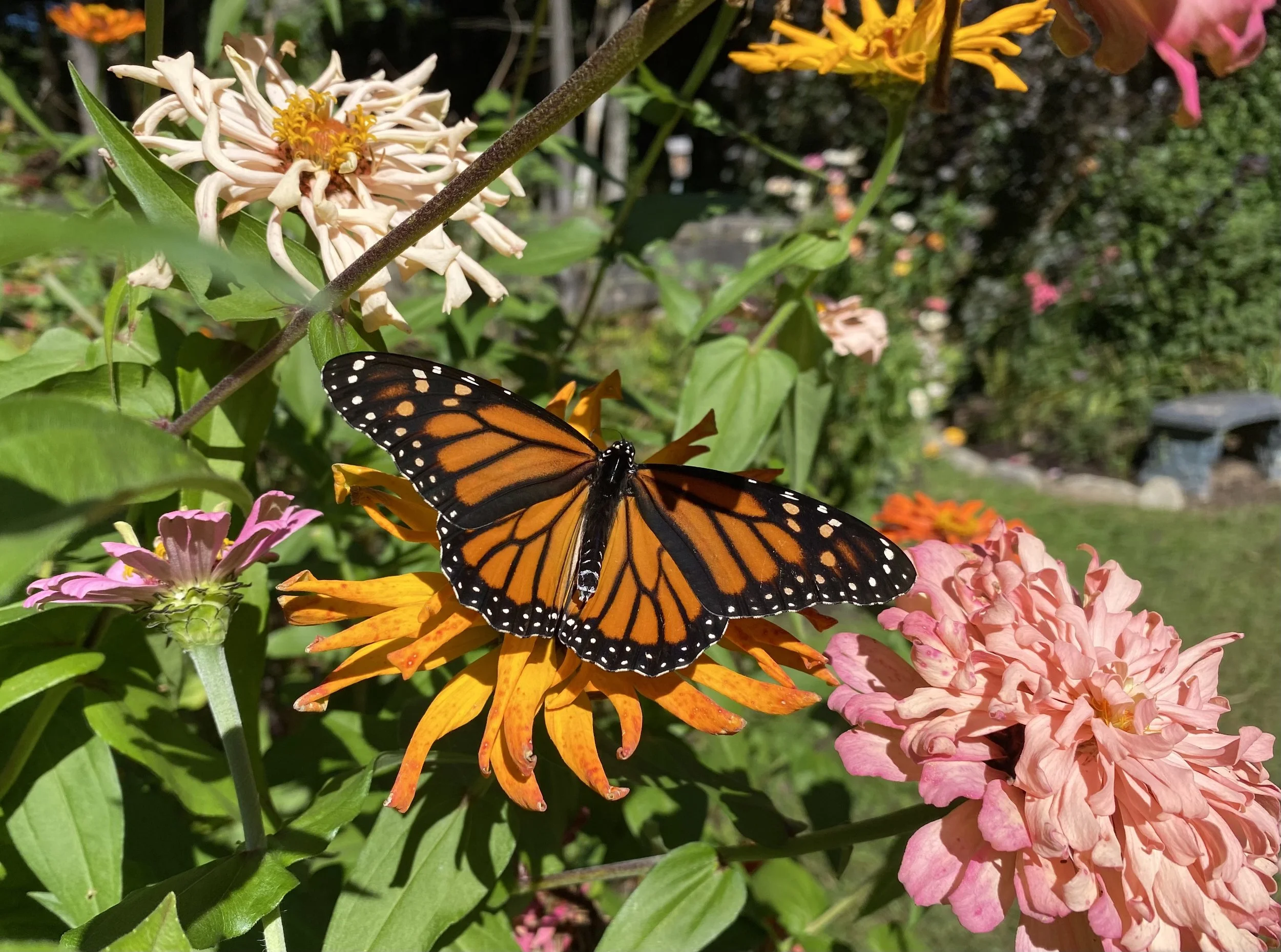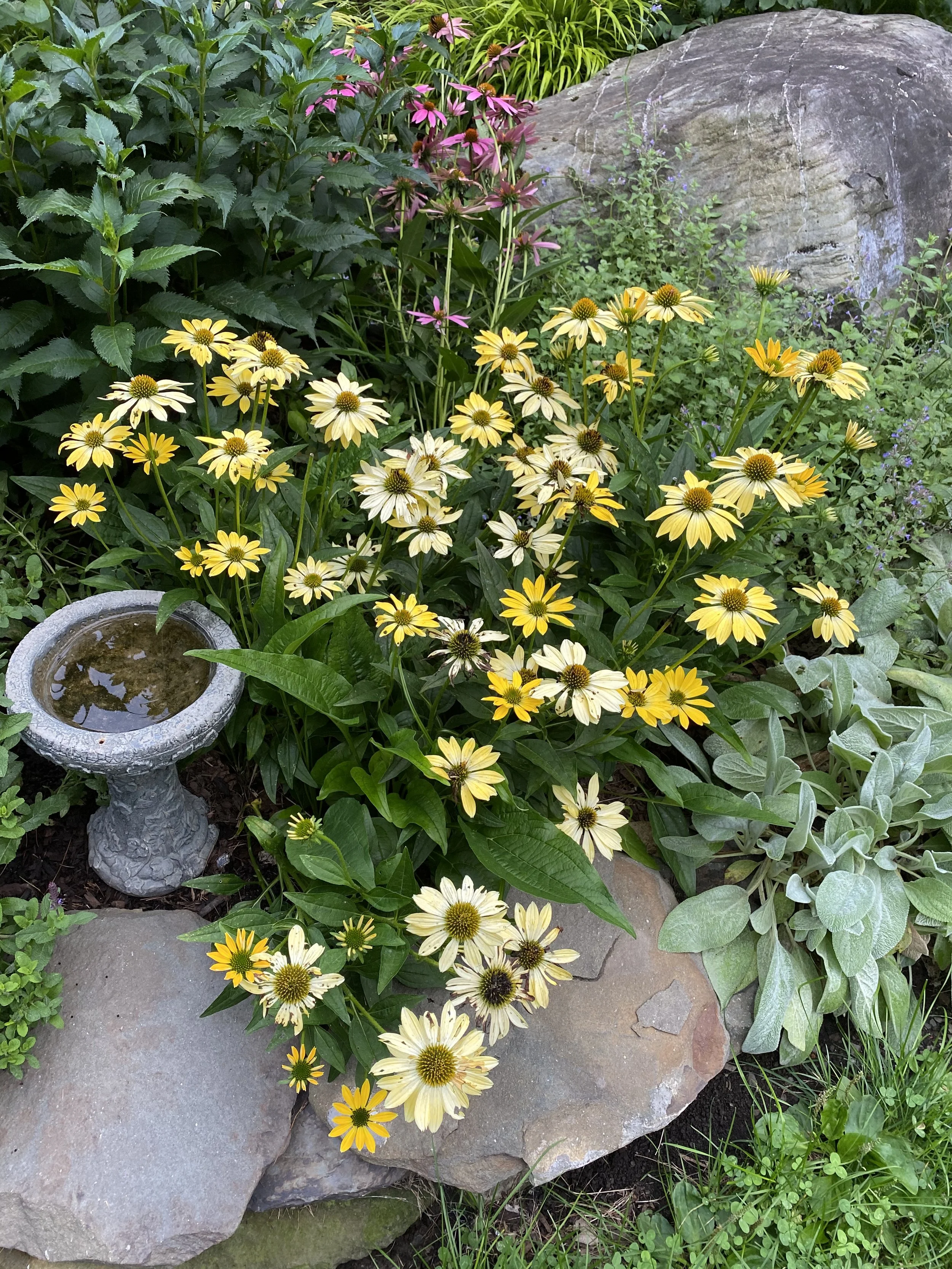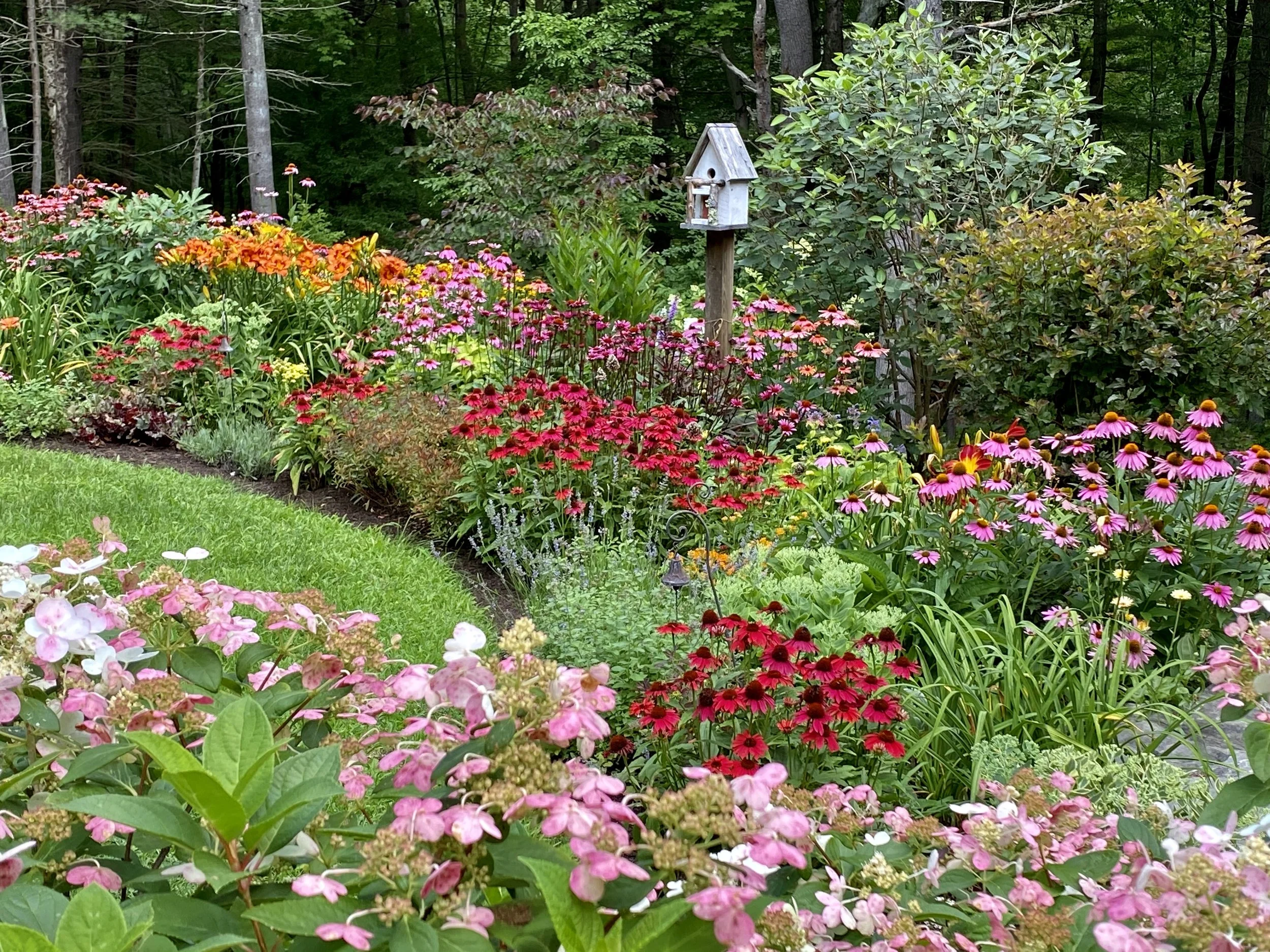Create Plans For Your Ideal Garden
Perspective. Planning. Possibilities.
Happy New Year! Welcome to the biggest stretch of downtime for most gardeners. As I stare endlessly outside from the kitchen table, awaiting the slow increase of daylight hours and warmer temperatures, I wonder what new projects and plants I will be tackling come Spring. You probably have similar thoughts… maybe not as early as January like me, but soon enough we will all have mailboxes stuffed with seed catalogs and juicy offerings of new introductions. That said, it is prime time to take a look at your gardening year in review! Here are some questions you can reflect on:
How was your 2021 season?
Did you love the way your garden looked and felt?
What were your biggest struggles?
Did you accomplish your goals or at least see progress towards them?
Did you throw in the trowel by July in frustration?
Did you experience new revelations in the garden?
Did your moments of joy outweigh your moments of frustration?
Did the changes you made in your garden this past year help bring your ideal garden closer to reality?
The answers to these questions hold the key to unlocking and creating a gardening plan for your upcoming season. Remember, your garden is not a ‘one and done’ project. It is ever evolving, ever changing and always demanding your attention. Your ideal garden is not something that’s finished as soon as its planted, nor in one week from planting, nor in one month or one year. So, where do you begin the wonderful journey of getting that beautiful garden in your mind to be the reality in your backyard? Let’s dig deeper!
Lots of gardeners start the season off with high expectations of a perfect garden. You know, when you’re mind convinces you that you’re going to have the season of a lifetime. “I’m going to have gorgeous plants, I’ll be on top of my pests, I’ll weed everyday, I’ll spray on a schedule for deer and rabbits, I’ll have tons of beautiful flowers, fruit setting at all-time high rates, no signs of fungus or bacterial leaf spots…”( need I go on?) I know what this feels like because, well, I’m guilty of it too. BUT we live in the real world so we need to be realistic. Have you ever had a perfect gardening season? I have had seasons where parts of my gardens were as close to perfect as I think they’ll ever get. Then, I’ve had seasons where my gardens overwhelmed me all season long due to various compounding problems. Never have I had a season of overall perfection… and neither will you… and its ok! There are just too many variables outside of our control… wildlife, pests, weather, lack of precipitation, too much precipitation and lack of time to name a few. So, how do you decide what to improve on first? Or how to improve on these areas? Where do you start? What can you add? What should you remove? What are you willing to tolerate and manage? Maybe, it’s just a simple matter of how to arrange the existing plants you have to create a more unified cohesive look.
I’ll be tackling exactly these things for my own gardens in the next few months. So, if you’re wondering where to start, try first by looking at your year in review. Photos! Sounds silly, but think about it! When you scroll through your garden photos of the past season, you should find yourself feeling all those feels you felt during the season. The good, the bad and the ugly.
Some of my moments went like this:
‘Ahhhhh! the aroma of freshly snipped herbs’
‘Man! Those were so pretty’
‘Ugh… I am never growing those again’
‘Look at all the bees on that plant!’
‘Oh crap! I forgot to deer fence’
‘Look we have our first tomatoes!’
‘Wow! Those colors kinda go great together!’
‘What the heck is all over that plant?’
‘Yay! We have monarchs today!’
A female monarch visiting my zinnias!
If you’re like me, you probably have a phone full of pictures to bring you back to your growing season. These moments are where you’ll gain insight into your ‘ideal garden’. (Notice! I didn’t say perfect garden.) Photos inspire changes and progress in our journey. These moments are instrumental in planning ahead for the upcoming year.
So grab whatever device your pictures are saved on (and if you didn’t take pictures, make it a resolution to start this year even if you feel your gardens aren’t worthy!) and begin scrolling back to the dates in your gardening season that gave you the most joy. Then, create an album (For example: ‘My Ideal Garden’) and add your favorite pictures from the season. If you’re just beginning your journey, save photos you find online as inspiration for the changes you plan to make. Use the album to plan for more happiness while reflecting on the moments that brought you the most reward. Was it new butterflies fluttering by? Was it the succession of colors that bloomed endlessly? Was it picking your first cutting garden bouquet? The taste of a fresh tomato basil salad after tending the plants for months? Was it the sight or sounds of baby birds nesting in a garden you planted? Those moments that made you exude big smiles and a joyful remembrance of the season are the very heart of why we garden. Each year, add photos of your season into your album. This will create a resource for you to refer back to on your journey.
My first bouquet made in 2021 from flowers in my garden.
While looking for your most impactful photos, you will no doubt come across a few that you’d like to forget. Perhaps pictures of those unsightly Japanese beetles attacking rosebuds just before they open or deer that beat you to the buds. Let’s create a second album for the struggles you experienced. Include what you consider ‘garden fails’, messy or unsightly parts of your garden, unmanageable tasks, frustration with specific plants or pests and any other less than stellar findings in your garden for the season. You may realize that the flower you splurged on and gushed over in the Spring became the most high maintenance girlfriend in your garden! No amount of pretty is worth a finicky, endlessly needy plant if you don’t have the time to spend on it! So, go ahead, move that picture into the ‘Garden Struggles’ album. After all, no one intentionally plans to have a frustrating season so give yourself a heads-up, a game plan and prepare for less frustration as you decide what challenges you’re willing to tolerate and what new changes will be made for a more joyful journey.
Echinacea ‘Summer Solstice’ growing in the shape of a heart. My garden was showing me some love. Make time to notice the little things.
TIPS FOR PLANNING AHEAD:
Once you have sorted your photos think about what it was that made you move them to the albums to begin with. Taking a look at your ‘Ideal Garden’ album, you probably started to feel those feelings that make gardening so good for our emotional, physical and mental well-being… joy, excitement, anticipation. Focusing on the moments that bring us joy (in more ways than just having a pretty garden) will allow you to plan for more of those moments in the future. Use them as a stepping stone to plant more of what made you say ‘Wow!’
Looking at the album of struggles will help you decide what was worth your time and what to avoid. What was the level of reward/joy versus the level of frustration/trouble. Will you try again? Is there an easier, pest-free low maintenance option that will give you the same joy without the headache? Is there a tool, trellis or trick that will make it thrive better? All things to consider when deciding what you want to spend your time on this year versus what you did spend your time on last year.
Lastly, think about the changes you want to make. Was there a plant or combination of plants that made you stop and take pictures?! Repeat it! Plant that combination again! Did you see a color combination when you were out in a neighbors garden that made you take notice? Use those colors to plan combinations in your own yard. Did you have color all season long in one garden but struggle to replicate the same in another? Determine what area was lacking in color or maybe what color was lacking and the timeframe you need the color and plant accordingly. Were you missing blooms during a certain month? Check out your local nursery for things in bloom during that time. Plugging in color becomes quite easy to plan for when you have dated photos to guide your times of missing blooms. Did your happiness came from new butterflies in your yard! Want to see them again next year? Identify the butterflies you witnessed and then research their host plants! Adult butterflies will likely stay around longer if a food source for their babies is nearby. Were you disappointed because you lacked butterflies? Same advice applies. Add host plants for the butterflies you wish to attract and over the next few seasons you’ll start to see them show up!
Perennial Sun Garden blooming in July
In conclusion, you are in control. I tell myself this even in situations where those little garden wreckers called Japanese beetles love to decimate the buds of roses (specifically my David Austin Roses). The dilemma: I know it will happen every year. The Struggle: Am I willing to handpick and tolerate them in an organic fashion in order to enjoy my roses for the short time I can? For now, I choose to fight this battle for two reasons. First, the roses are so gorgeous! Second, I can usually get a first flush of roses in June before the beetles emerge in the beginning of July. The joy of their bloom is worth the frustration to me. The choice I make to tolerate them means I should expect to spend some of my time managing them, keeping in mind that I am in complete control of how I can spend my time. If it gets to a point where the joy of the blooming roses does not outweigh the destruction and frustration of the beetles, I know I can choose to surrender the roses.
We dictate how much time we will spend maintaining our gardens, growing new things and managing pests. Review your garden struggles. Eliminate them if you can, or learn to accept the time spent managing them. If gardening is your thing and most of your free time is spent there, your level of tolerating finicky plants and unruly pests may be higher than most. Choose the challenges that bring you more joy than frustration! There’s nothing wrong with changing courses in your journey if the current path becomes burdensome. Less work with more reward in your happy place is ideal, so garden smarter. Be adaptable, try new things and have the ability to let go of the tasks that overshadow your rewards. Make choices that align with your ideal garden and allow yourself time to enjoy your hard work. Remember, happiness is right where you plant it, and you control the shovel.





